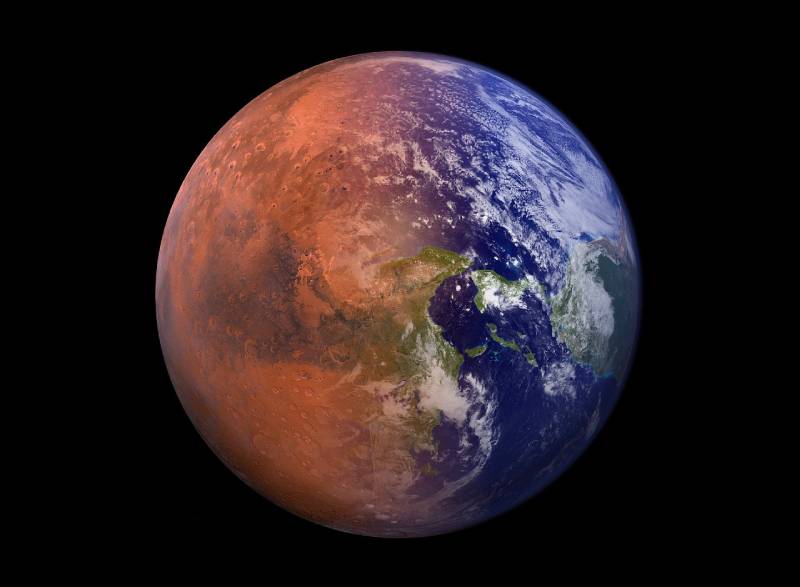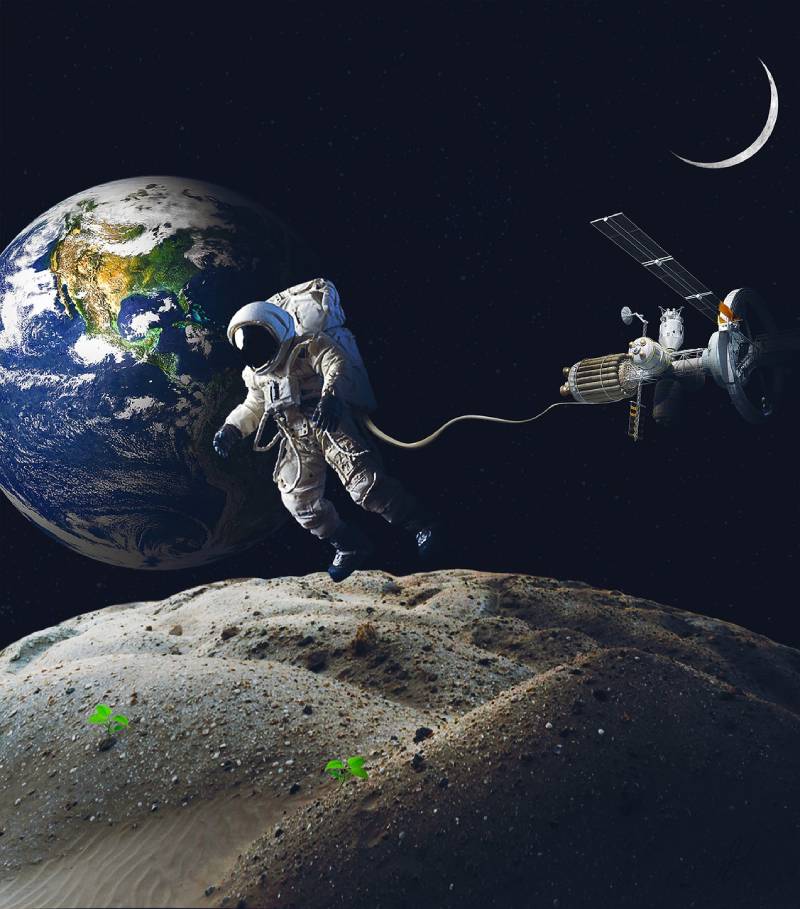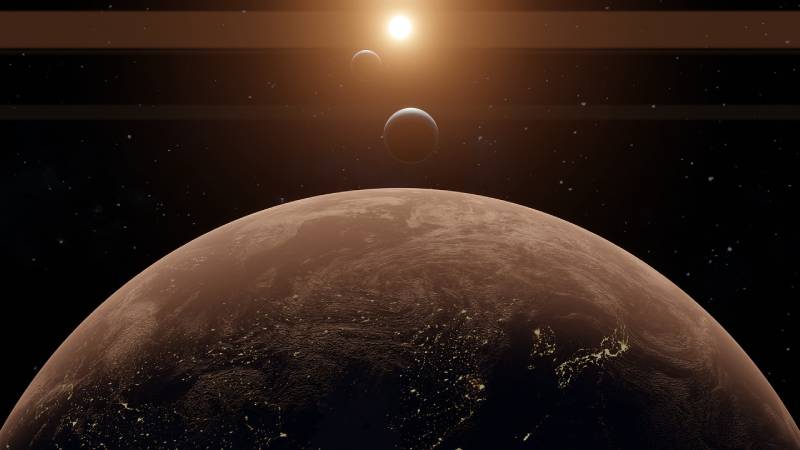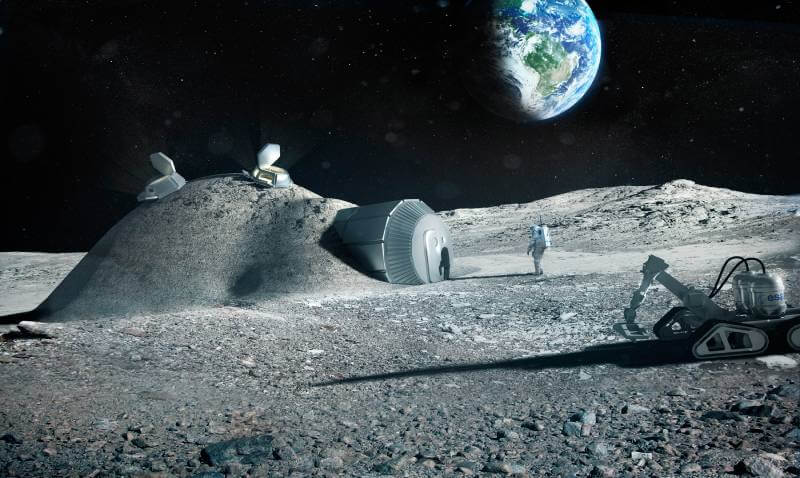Terraforming the Moon goes beyond colonizing the Moon (which we’re planning to do) but it’s about changing the entire Moon to be a duplicate of Earth. It’s about creating an atmosphere, adding water, growing habitats, and developing an environment that is able to sustain life.
Terraforming is defined as “Earth-shaping a planet, moon, or other body is the hypothetical process of deliberately modifying its atmosphere, volatile components, temperature, surface topography or ecology to be similar to the environment of Earth and to make it habitable for Earth life.”
Mars is the Best Candidate
If we were to Terraform any planet, the prime option would be that of Mars. It appears to have water hidden beneath the surface, enabling it to have a better chance of sustaining life.

However, Mars will have to wait because it is much further away than Earth and would be more of a challenge. The Moon is the best option at this point because of its proximity to the Earth. It’s only a three-day journey, while Mars is a 21-month journey.
How to Terraform the Moon
Currently, NASA and Space X are planning to colonize the Moon. They plan on building a home base, an oxygen pipe, roads, and even a sustainable facility for astronauts to live for extended periods of time.
This isn’t terraforming. Terraforming is to create a replica of Earth. In order to Terraform the Moon, we first must create an atmosphere. Currently, the Moon doesn’t have an atmosphere, so we would have to create one from scratch.
Building an Atmosphere
To be able to create an atmosphere, we must launch hundreds of iced comets at the surface of the Moon. The ice comets will crash into the Moon and create water sources. Water source is one of the main attributes of why Earth is successful at sustaining life.
The ice rocks would release carbon dioxide, water vapor, ammonia, and methane. All of the gases would gather together and would result in an atmosphere similar to Earth.
Creating an Earth-Like Orbiting Cycle
The icy asteroids hitting the Moon would give the moon momentum. It would start spinning faster. Right now, the daytime is about 14 days and the nighttime is about 14 days. With the icy asteroids’ help, we can get the Moon to spin faster and replicate the day cycle like the Earth. The more rocks that we launch to the Moon, the faster it will spin.
Protecting the Moon
The Moon gets bombarded by comets and solar winds! How do we protect the Moon from all of the things that space is throwing at it? Well, the hope is that with all of the icy asteroids hitting the Earth, the Moon’s rotation would become faster and result in the magnetic field being awakened.
The magnetic field would serve as a natural protector for the Moon’s surface.
Another option would be to create a physical shield around the Moon that protects it from outside sources.
Generating Sustainable Plants
Once we have an atmosphere, a water source, and protection, we can start bringing plants to the surface of the Moon. We have to bring genetically altered plants that would be able to grow on the Moon’s rocky surface. Next, we would drop algae to create oxygen.

And that is just the beginning of life on the Moon!
Sending Humans to the Newly Terraformed Moon
After decades of work and millions of dollars invested in the Moon, we would send out the first humans to the Moon. The Moon would resemble that of Florida. It would have oceans, cloudy sunny skies, and the temperature would be very warm due to the increase in greenhouse gases.
The Moon is ⅙ of the Earth’s gravity! Oceans would have tides as high as 20 meters because the gravity wouldn’t be as strong. People would be able to jump much higher and we would all weigh much less! Athletes might want to go to the Moon to be able to jump higher! Basketball might be a much different sport! Better yet, on the Moon, you can run on water!
The Intriguing Concept of Terraforming the Moon
Of course, the thought of terraforming the Moon is an intriguing thought. We have thought about colonizing the Moon and creating a sustainable life on the Moon for quite some time. People have even seriously considered turning Mars into a planet similar to Earth.

Elon Musk, leader of Space X, has a very strong desire to colonize Mars and create a whole new life on the red planet. Scientists are certainly not ruling out any space explorations or advancements in terraforming celestial planets.
However, there are many things that must be considered if we are actually going to try to terraform the Moon. What if we mess up? What if we destroy the Moon’s surface as opposed to creating a habitual environment? What if we try to make the Moon more human-friendly and then we ruin it?
We certainly don’t want to ruin the Moon! We need to be extremely careful when trying to do anything with the Moon. We hope that scientists take into consideration the fact that you can’t replace the Moon if their plan doesn’t go exactly as they want.
The Moon and its Possibilities
People were skeptical that we could leave the Earth’s atmosphere and land something on the Moon. And then we did. People were hesitant to believe that we could actually land humans on the Moon. And then we did. What we thought was impossible was proven to be possible.
Science is ever-changing, always evolving, and always proving that dreams can become reality. It will be absolutely amazing to see what researchers, scientists, NASA, Space X, and other institutions can come up with in the near future.
Currently, NASA is planning on setting up a home base on the Moon and creating sustainable habitats in the next few years. Just in 10 years, we are going to see impressive advancements that will excite us all.
Conclusion
The Moon lacks many essential features required to create a replica of Earth. Scientists would have to figure out how to create an atmosphere, insert liquid water, regulate the temperature, and address the radiation! There are many hurdles that might make it impossible to Terraform the Moon.
Although it is very interesting to think about a second Earth, it might not be a realistic goal, but it is important to never count out motivated scientists.

